2022-23 IAP Residency
VITA NOVA_New Life, 2022
Work Area: Exhibition Poster, Signage, Banner, Printed Matters, Etc.
Client: Incheon Art Platform (IAP)
Poster ︎︎︎
594 × 841mm
Motion Graphic by Hyejin Jeon
‘If Earth perishes, whom will the Moon orbit?’ I was staggered to have confronted this rhetorical question. An acknowledging ‘That’s a good question’ was my clumsy tribute to the enlightenment and epiphany that the poet conjured.
Perhaps we have been too light-hearted with the dictum ‘Earth is dying’ when speaking of climate change or environmental concerns, without being committed to the idea behind the dictum. None of us are concerned with the actuality of the planetary extinction (and how different are the terms extinction and death!), thinking it will not happen in our lifetime and that the fate of the dinosaurs will not recur for us. Hyesoon Kim’s question carried the sentiment that awakened our indifference. The fact that the poet’s thoughts would go beyond mere planetary condition to the moon in contemplating the death of Earth is, it goes without saying, of course, refreshing.
“I was tested positive for COVID-19 last month. I was very ill and it was thought-provoking. The fact that I was ill, along with the neighbors and everyone else in the world, reminded me how the world is connected and one.” Thus spoke the poet in a press interview when her poems were published. Ah, the person who senses the connection and solidarity with the world amidst the social distancing and individual isolation! Ah, poet! And ah, artist! I could not help the continuous shock and awe.
The doorbell rings,
in Moon where everyone is the last of their kinds.
With news of tragedy of the people on Earth.
One who used to embrace, gone;
A place to return, none.
Remorse and guilt (infinite fall);
Like apparition, without shoes, all.
Prostrate every moment every day, as if with a stomach problem.
Earth with virus around its waist like Saturn, like an emblem.
Hyesoon Kim, from If Earth perishes, whom will the Moon orbit? –
Desert Counsellor’s Office
Earth and the world after the COVID-19 pandemic are certainly different. The 2022-23 special exhibition, Vita Nova_New Life, by Incheon Art Platform, deals with the aftermath of the pandemic as such. While the exhibition, concerned with life after COVID-19, sounds as though it concerns the crisis, calamity, death, and extinction of the present that the pandemic has brought, it actually carries self-recognition and critical thinking on the status quo, that precisely because of such detriment, we should plan and pursue a new life, a different life.
‘Vita Nova’, which translates to ‘new life’ in Latin, is the title of the novel that young Dante wrote and an expression that Roland Barthes uses in Journal de deuil (Mourning Diary), a journal that he wrote after the loss of his mother. On one hand, the modifier ‘new’ means it has just been created and never used. On the other hand, ‘new’ in the popular Noir narrative, “let’s start anew” or “it is time that you live a new life”, means separation from past misfortunes or traumas. The exhibition remains faithful to the latter meaning. It is far from hoping for a new future, to construct ‘a new life’, and purporting a positive message. Instead, it is an acknowledgment that we must live a new life; being forced into it by the pandemic and having to carry on. Hence the proposal of the exhibition is that precisely because we have no alternative, we should look back, examine and scrutinize our surroundings and cast doubts on the things that we used to take for granted.
The artists in this exhibition have been paying gentle attention to things that were hidden, tried to hide, abandoned, and isolated, visualizing the things that we moved past easily or remained negligent and endowing a sense of existence to trivial things. In such existences, the artists capture sensitively the sharp beauty and grandeur, and the tranquil majesty that they emanate (Hyewon Keum, Seungbeom Son, and Seongyeon Jo). Much like the question from the Japanese novelist, “How would we look to non-human creatures? How about humans as aliens seen from the extraterrestrial life?”, the artists pursue co-existence by circulating around the non-human life on Earth, examining them or creating unexpected circumstances (Rahm Kim and Vagyoomoo). When an artist faithfully records absurd social phenomena like historians, the sharp ethics of the artist locates at the point of making a decision on what to record and how to record it (Critical Hit). Would not every situation get eventually reduced to the problem of a relationship? Whether through the form of social critique by a revolutionist camouflaged as a dystopian funky-ness (Munhee Park), or through the means of sacrifice, volunteering and consecration of a devout religious practitioner and concurrently as a serious researcher’s consistent experiments (Minkyung), the artists focus on the relationships between humans and humans, humans and non-humans, and humans and the world. The exhibition will feel empty without the discourse on the media environment with even more reinforced roles and responsibilities during the pandemic. The dramatic game work by The Strangers(Eunju Hitchock-Yoo), or works by Eunsu Kang which were produced by postulating the sounds as another fauna, help eradicate the fear of advanced machinery or technology and help such technologies find their place as a lovely companion of humans, means of aesthetic experience, and carrier of the values called life and ecology.
If art belongs to the visual domain and is founded on spatiality, literature belongs to the auditory domain and is founded on temporality. However, the space-time continuum is not something that can be separated in a clear-cut manner. In the formative situation called art, a narrative may surface, and in the linear narration of literature, an image may unearth itself. I was curious as to the interplay between art and literature, and the harmony and contrast that are revealed to us in so doing. It occurred to me that I should consciously look for the pleasant surprise that you face when discovering the coincidence of others’ senses and perceptions overlapping by chance in different places. This brought me to request Dahyeh Lee, a journalist for Cine 21, an essayist, and a book columnist, to pick novels that may be connected to the exhibition artists and their works. It was with the belief that the literary works that a person who plays with the language ‘linked’ will extend the space-time of this exhibition a little further.
I find the truth that will stay constant no matter how the world changes, before or after the pandemic; the cogito of the artists, ‘I create, therefore I am’.
Text by Yong-ri Lee (IAP Curator)
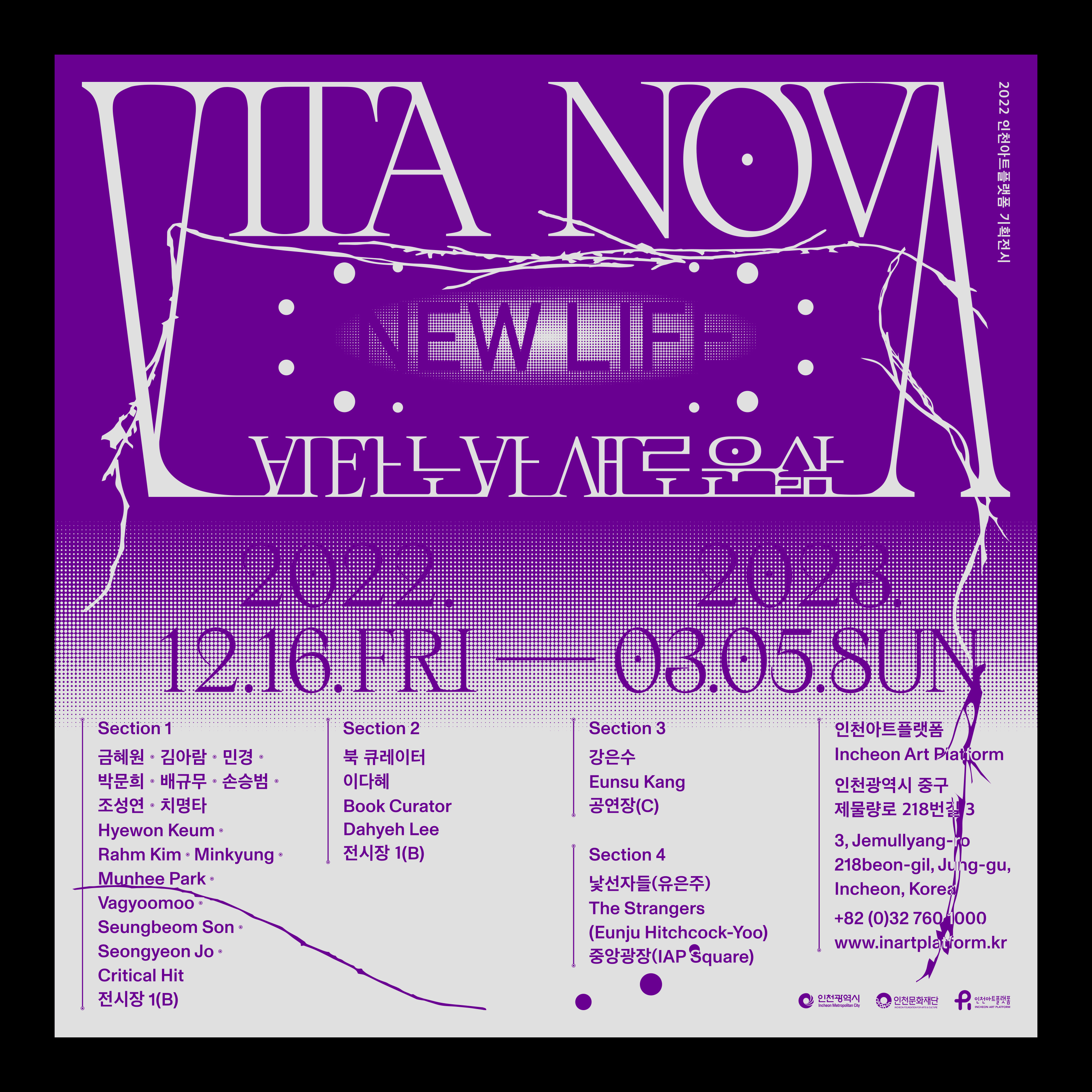
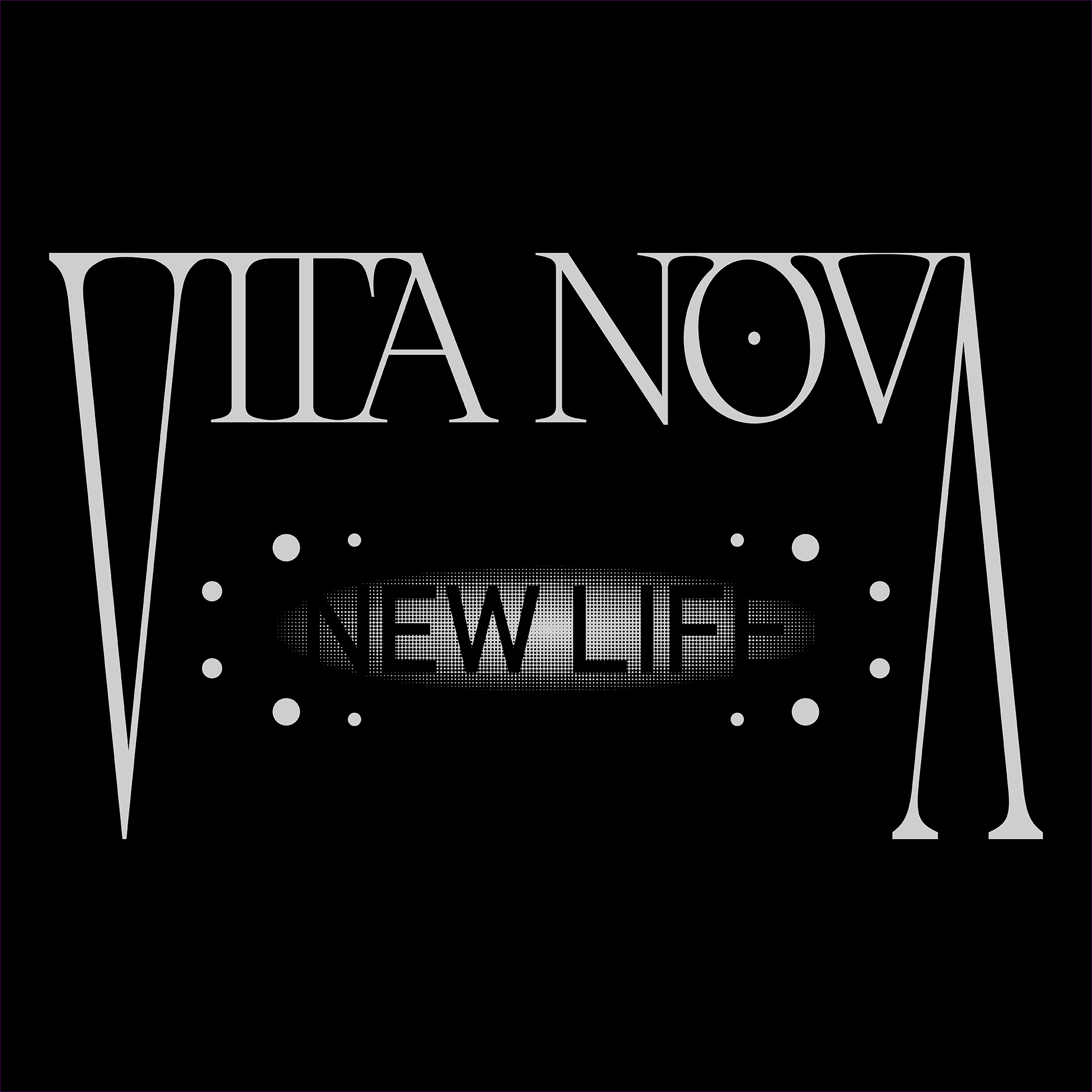
Applications︎︎︎
Poster (Square Ver.), Title Lettering

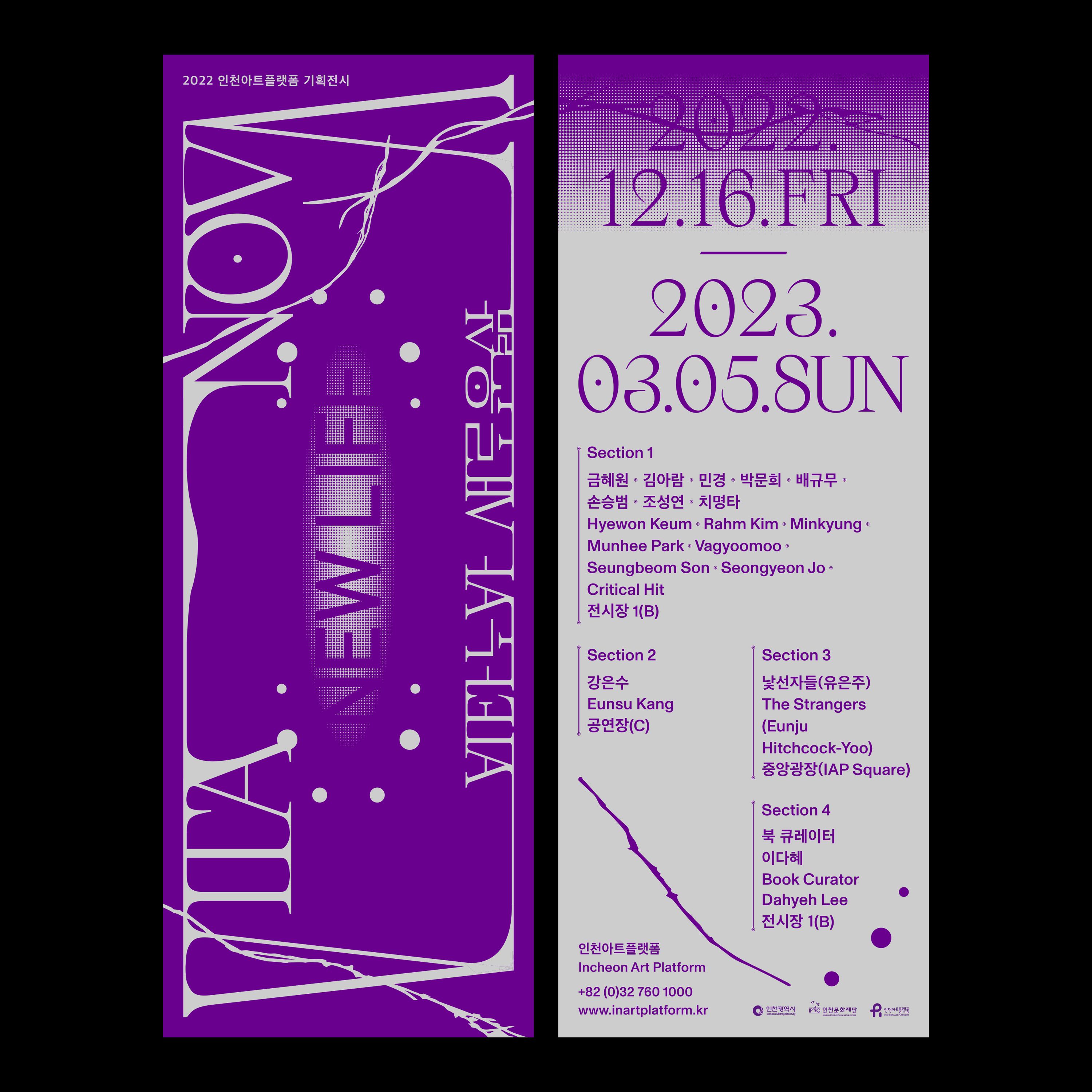
Applications︎︎︎
Web Banners, Banner / Dimensions Variable
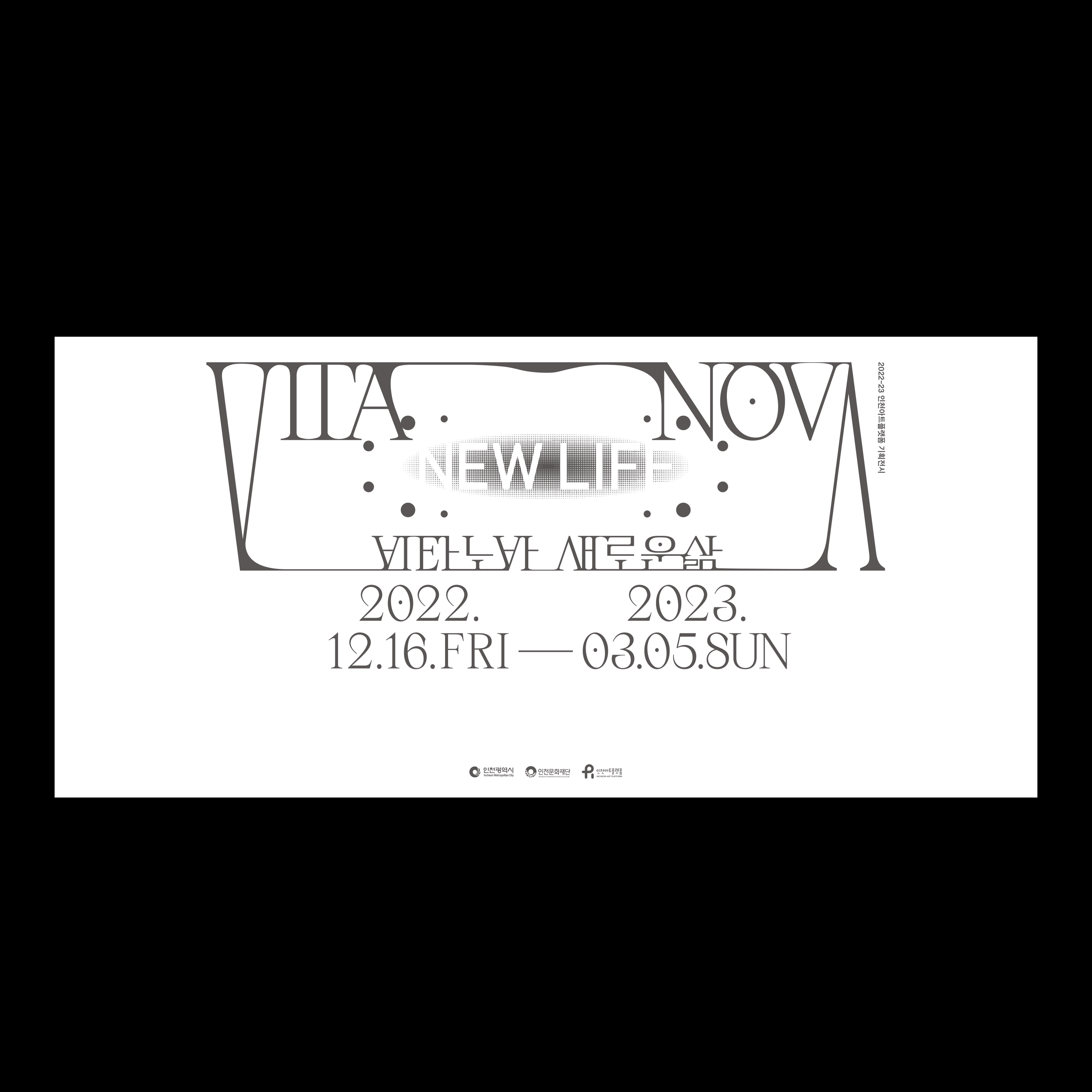


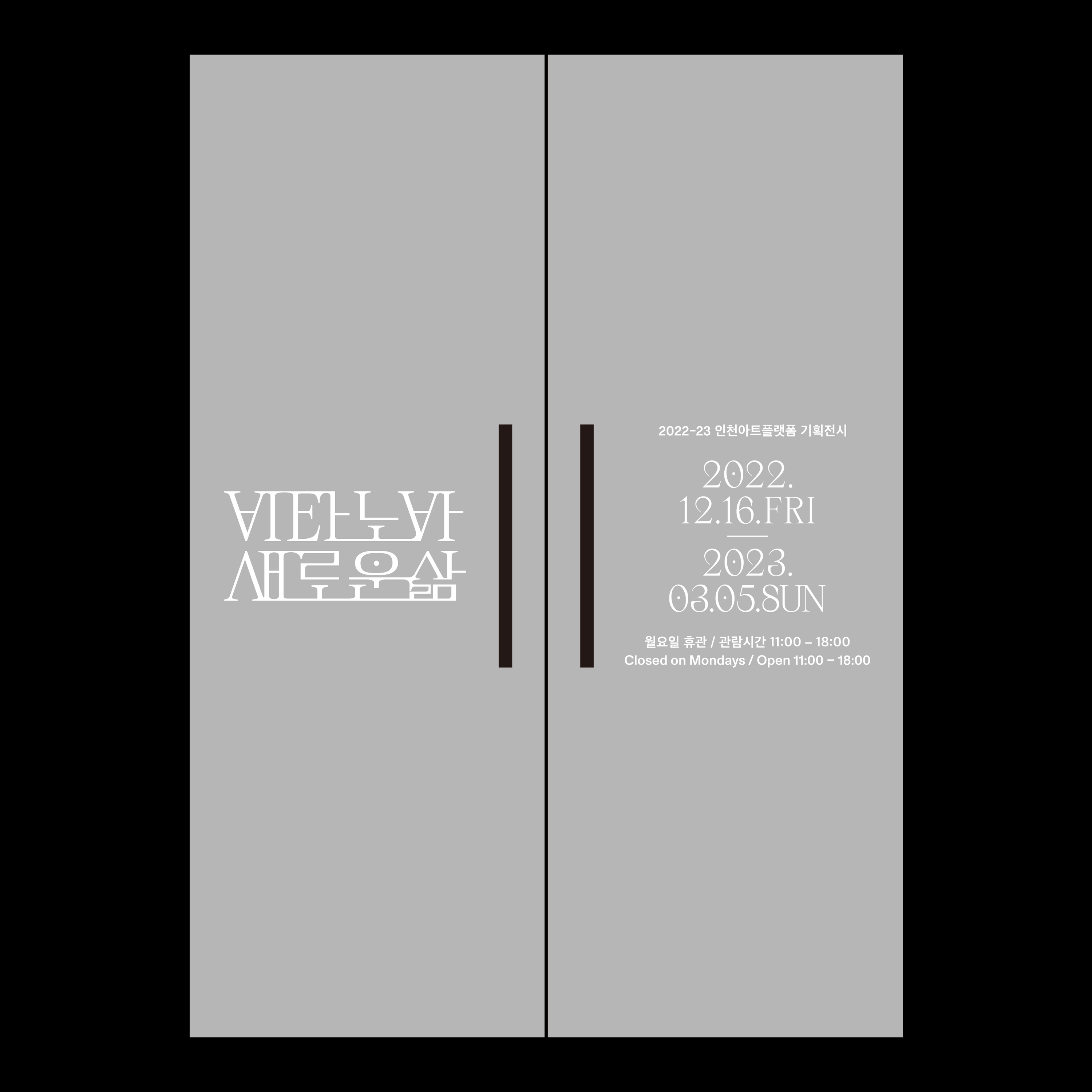

Applications︎︎︎
Wall Graphics, Caption / Dimensions Variable
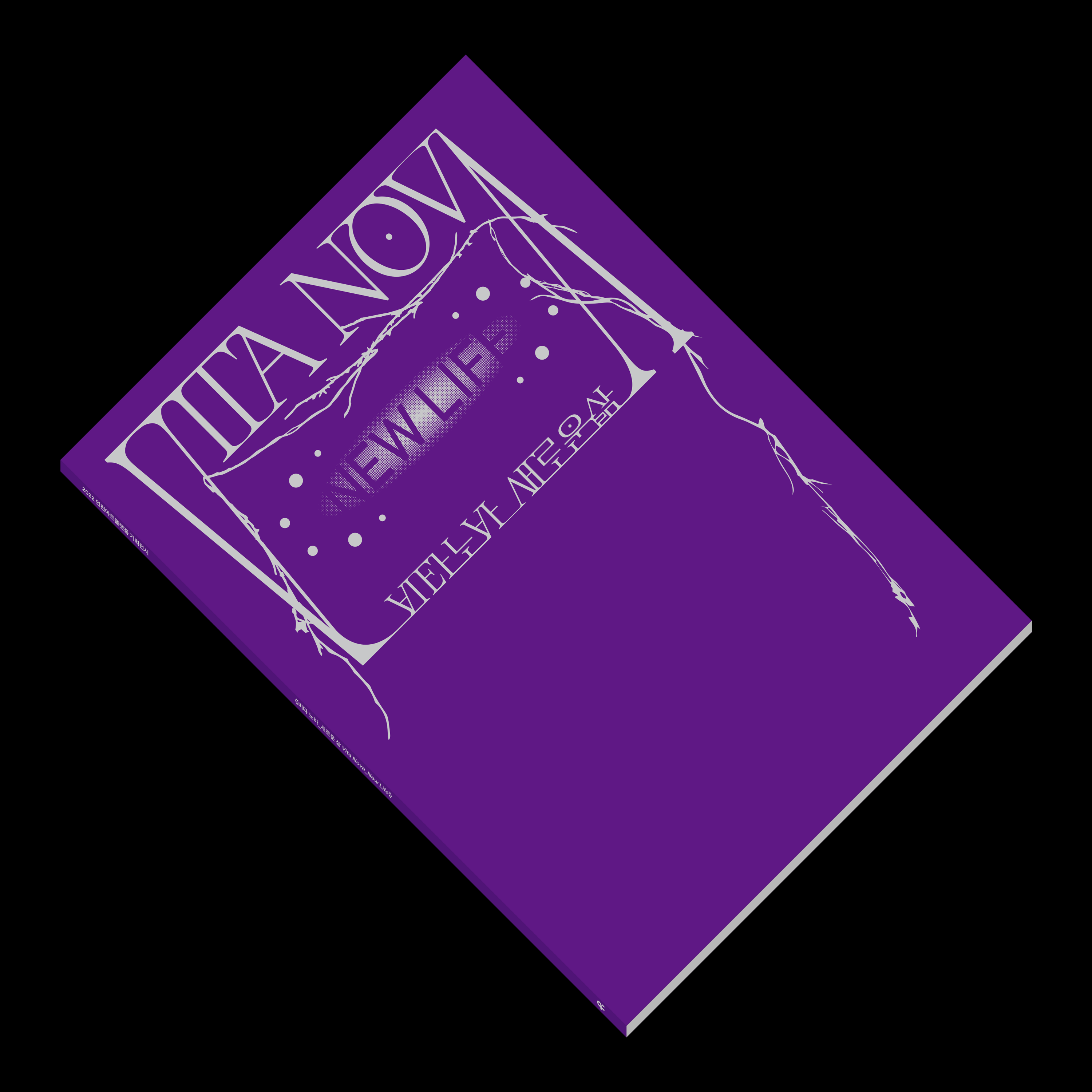
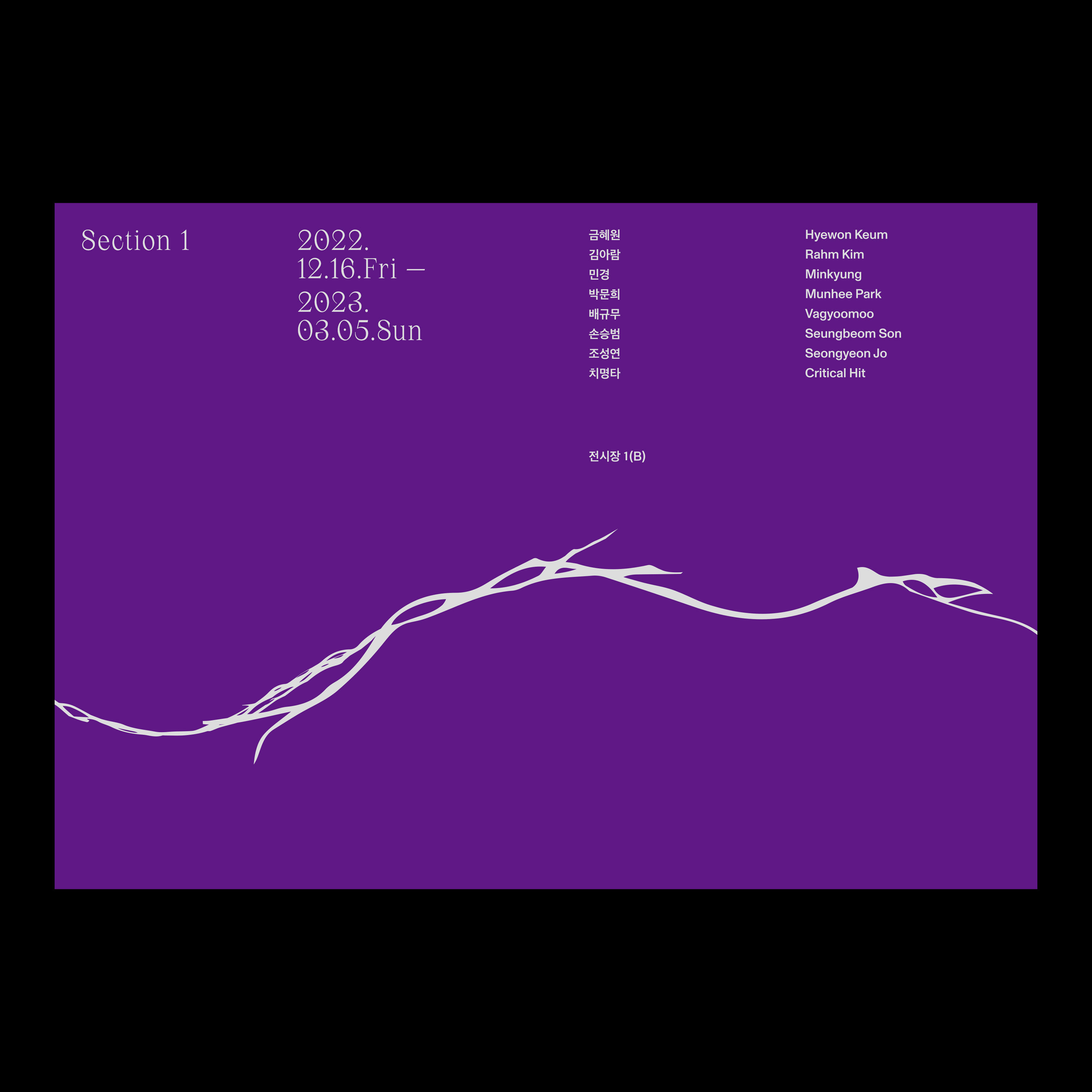


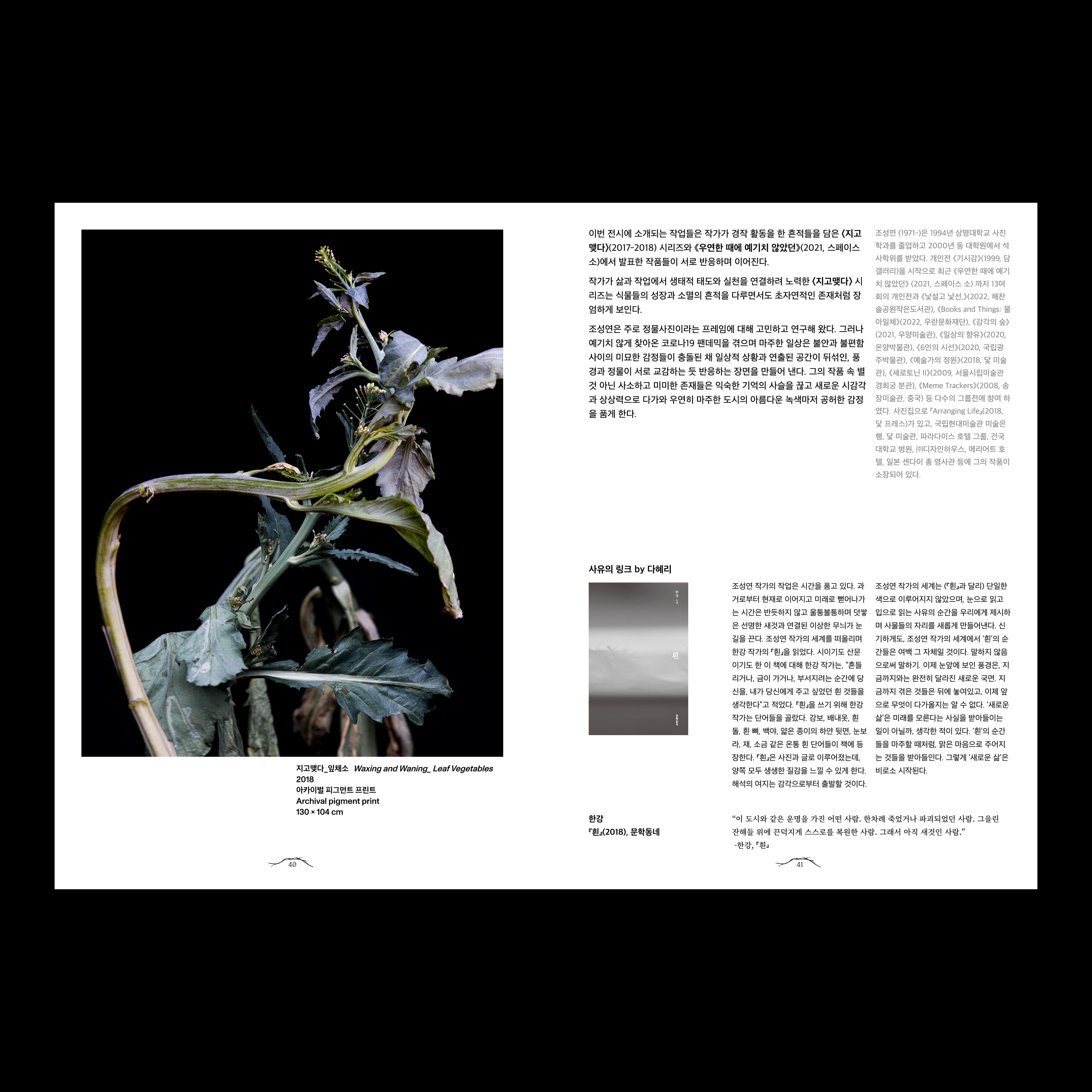
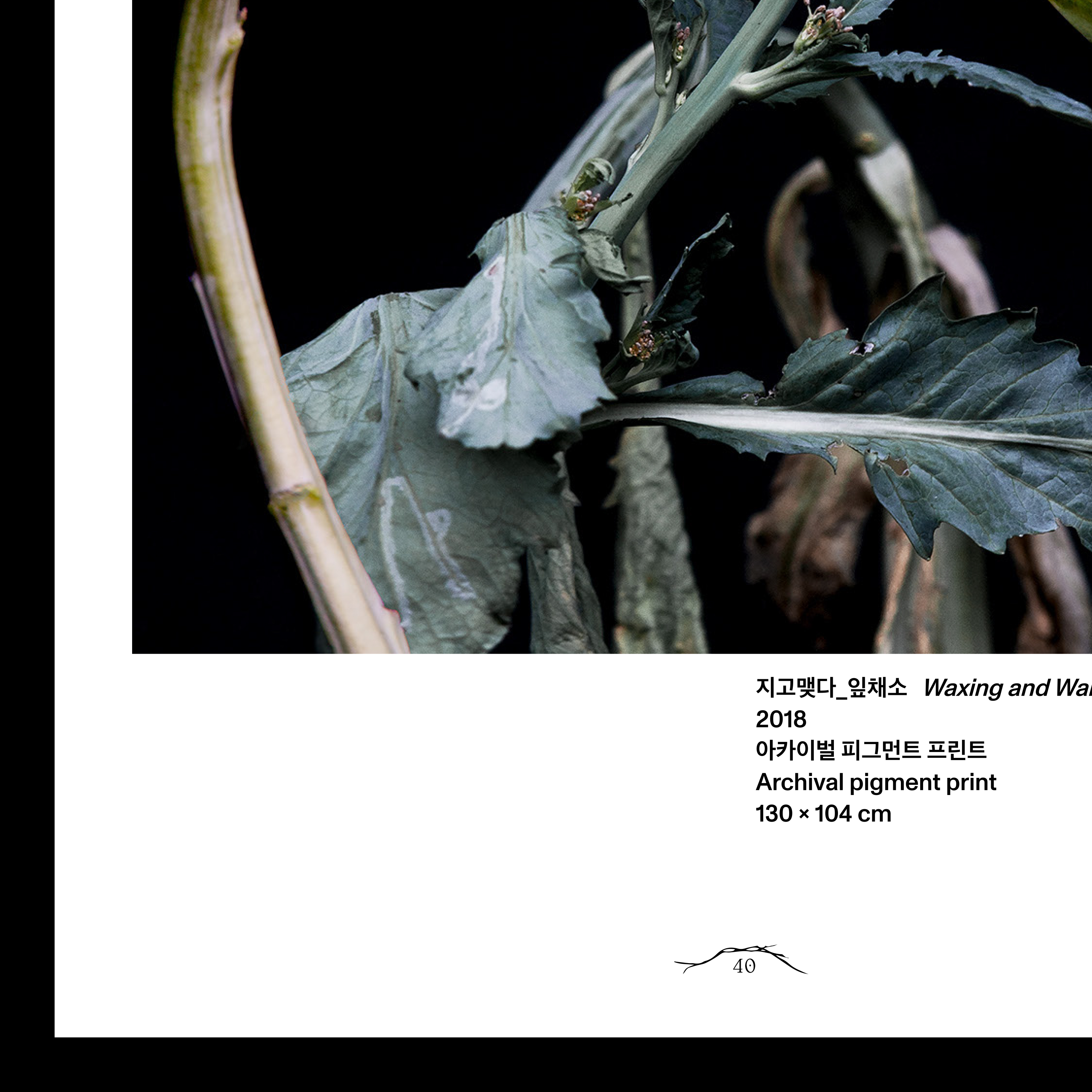
Applications︎︎︎
Catalogue (Front / Back / Body), 183 × 256mm, 62p
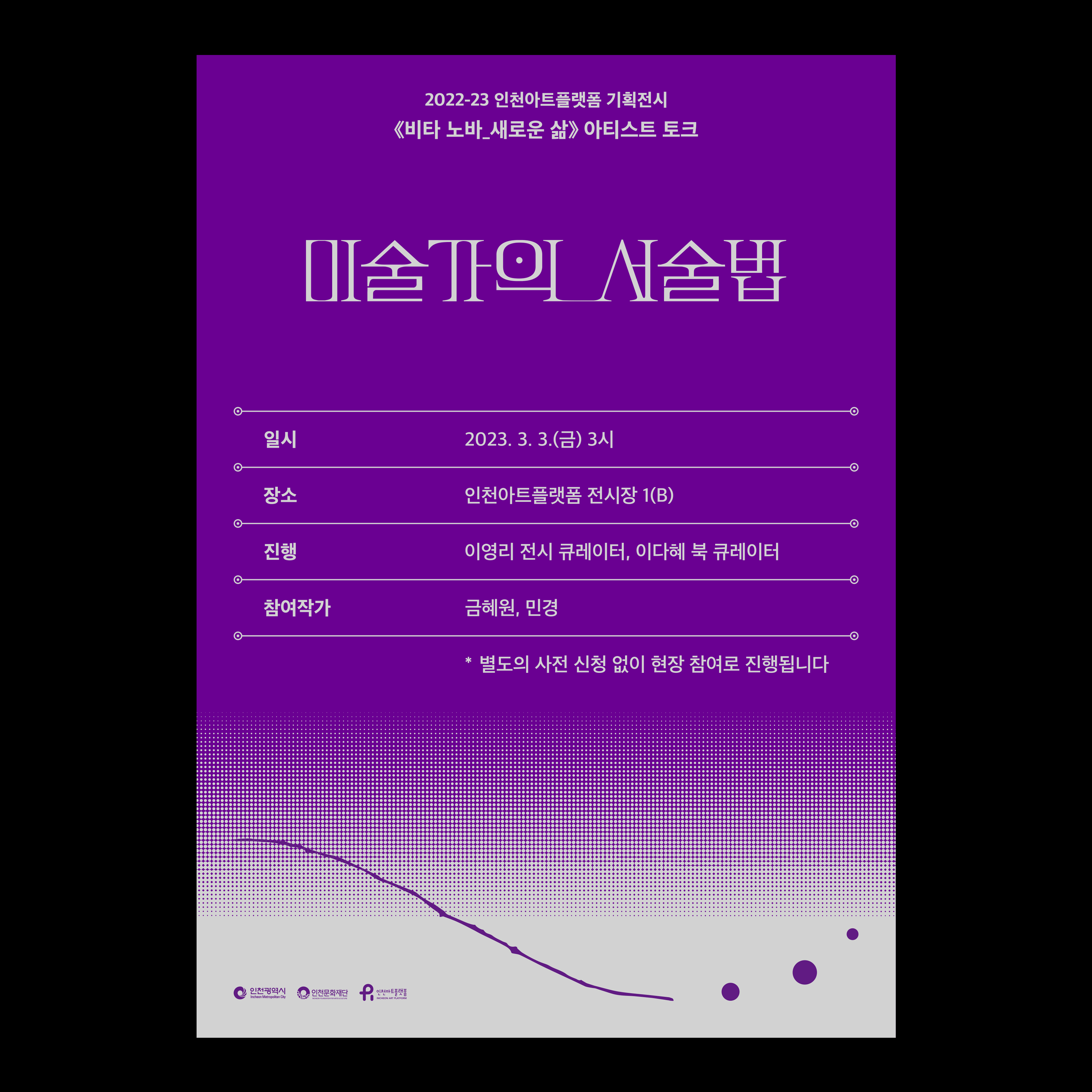
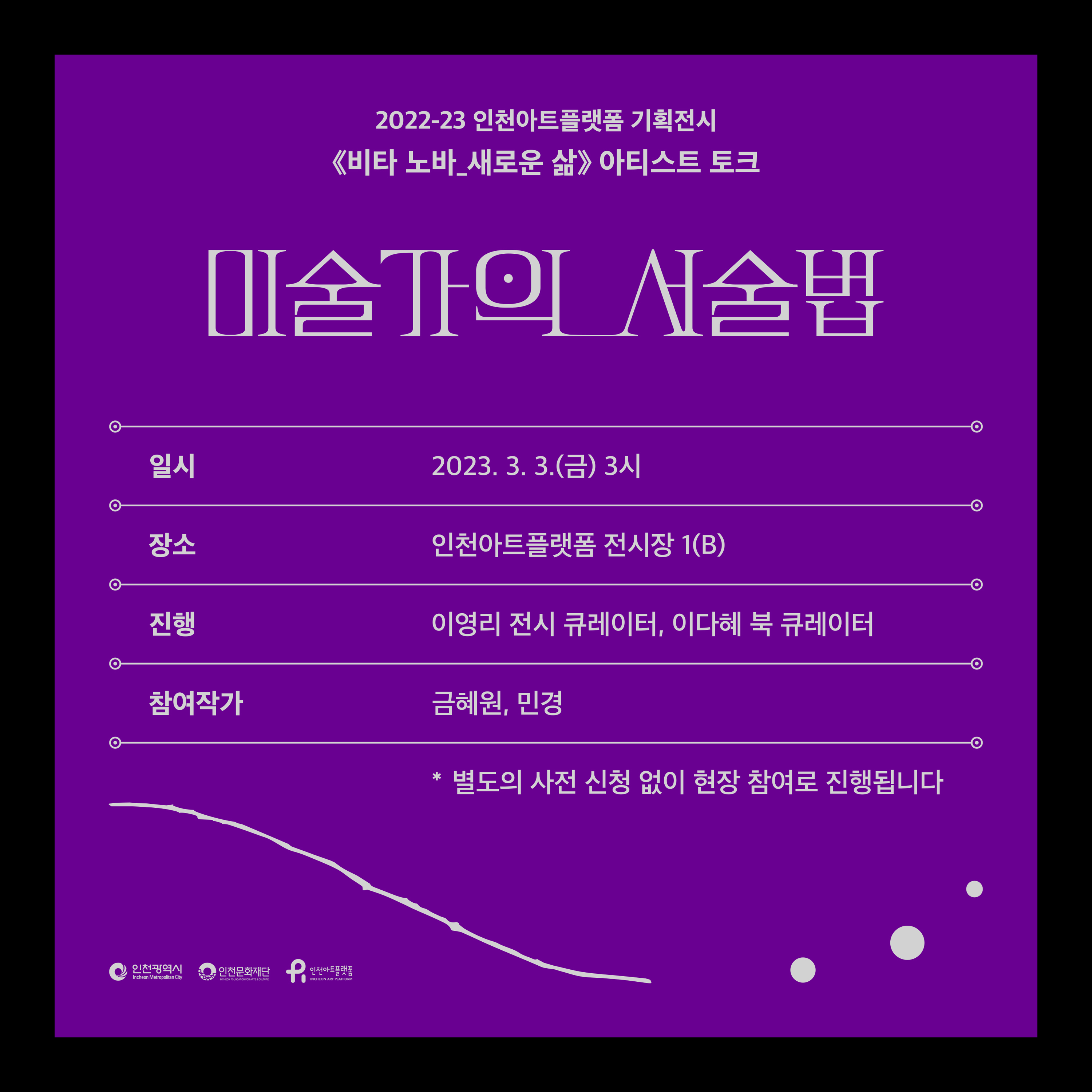

Applications︎︎︎
Program Title Lettering ︎︎︎
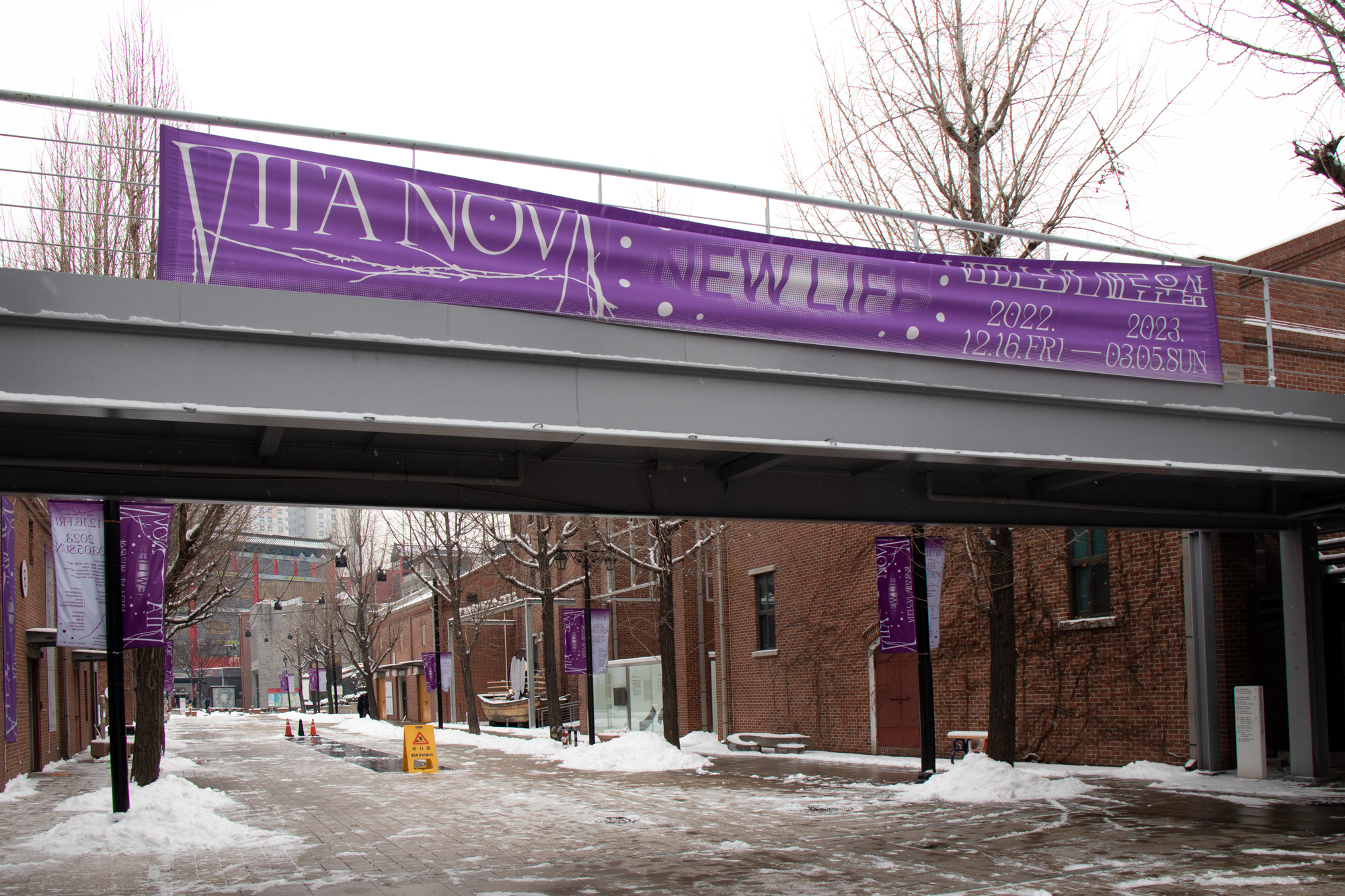
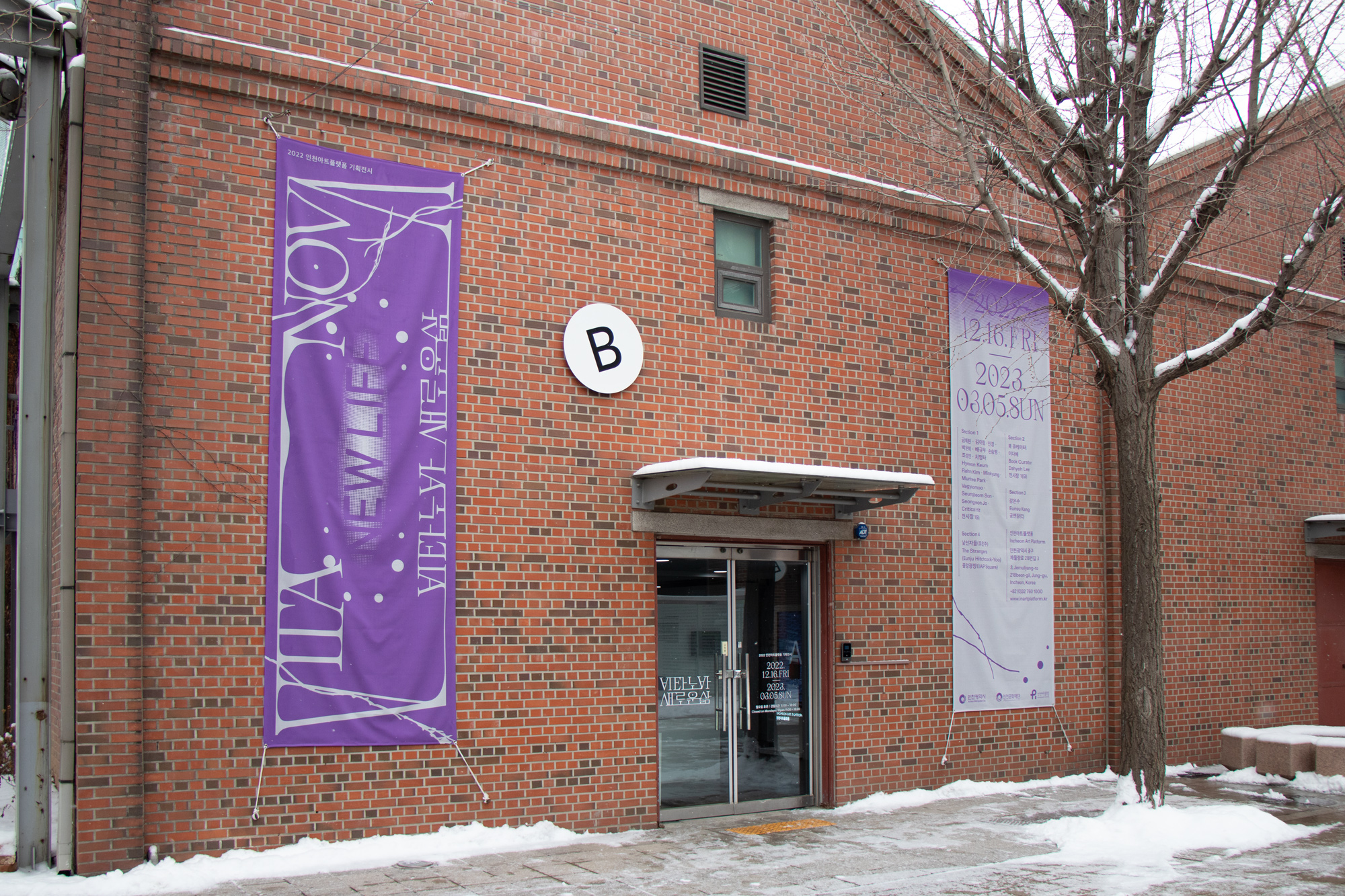

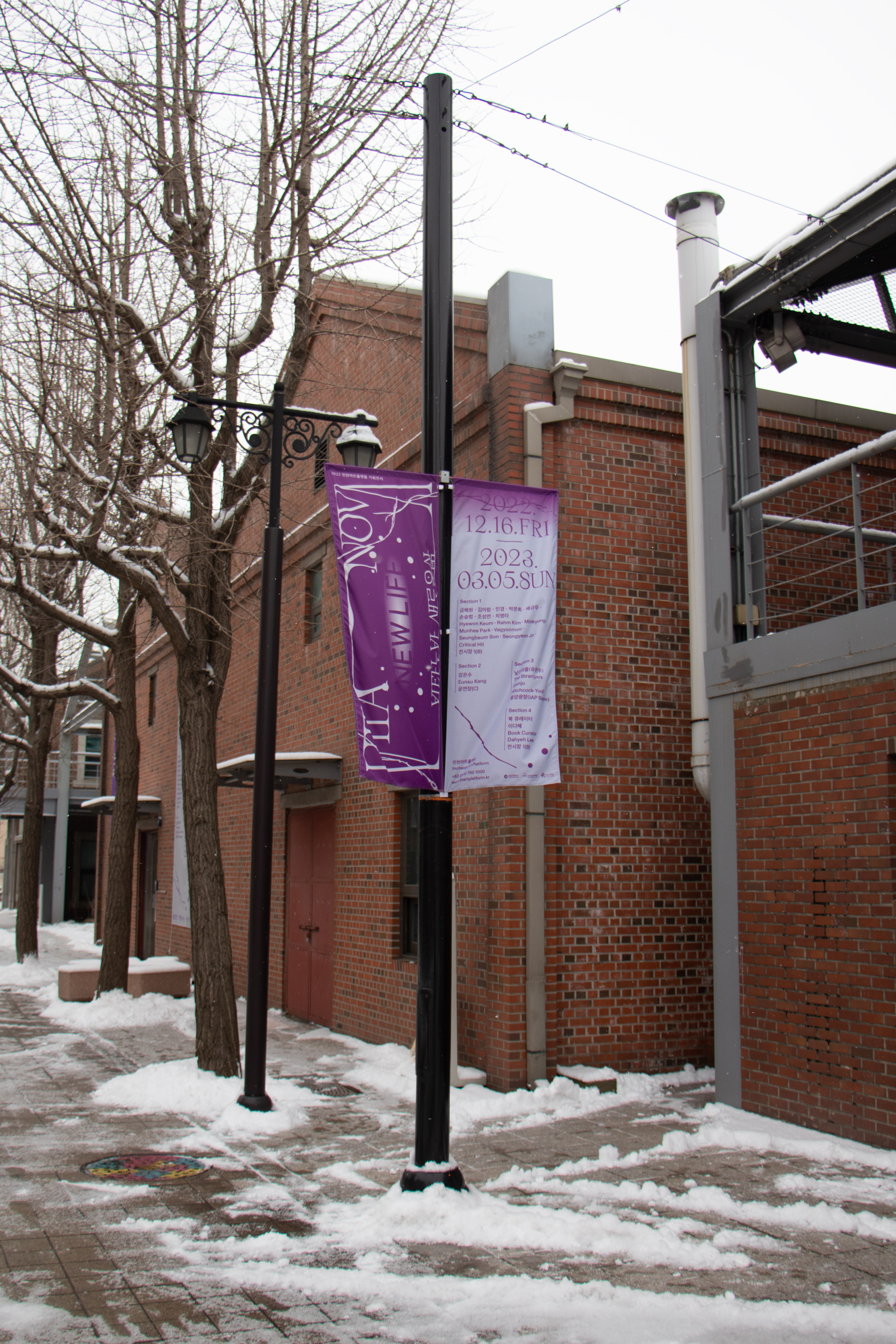
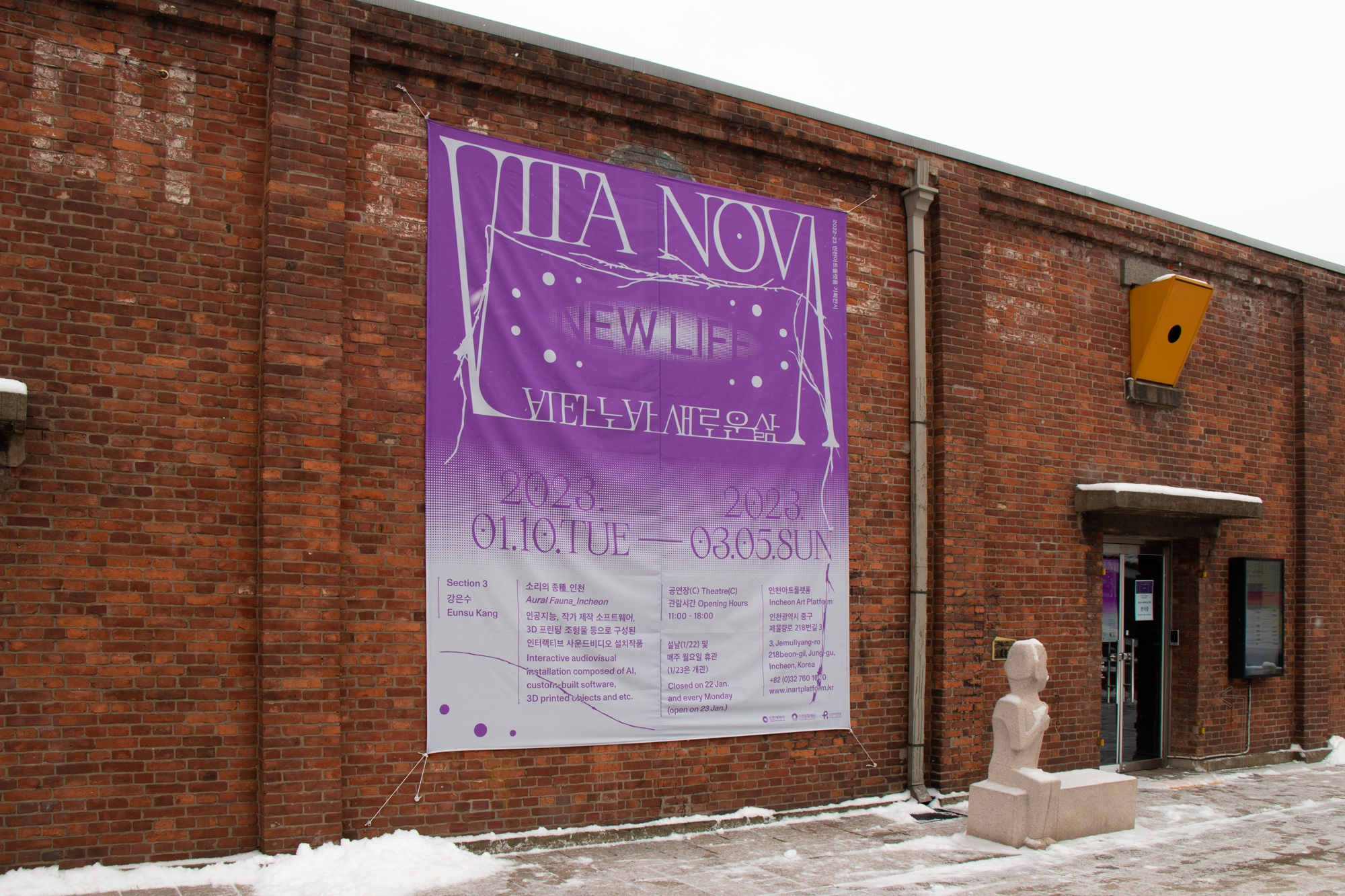

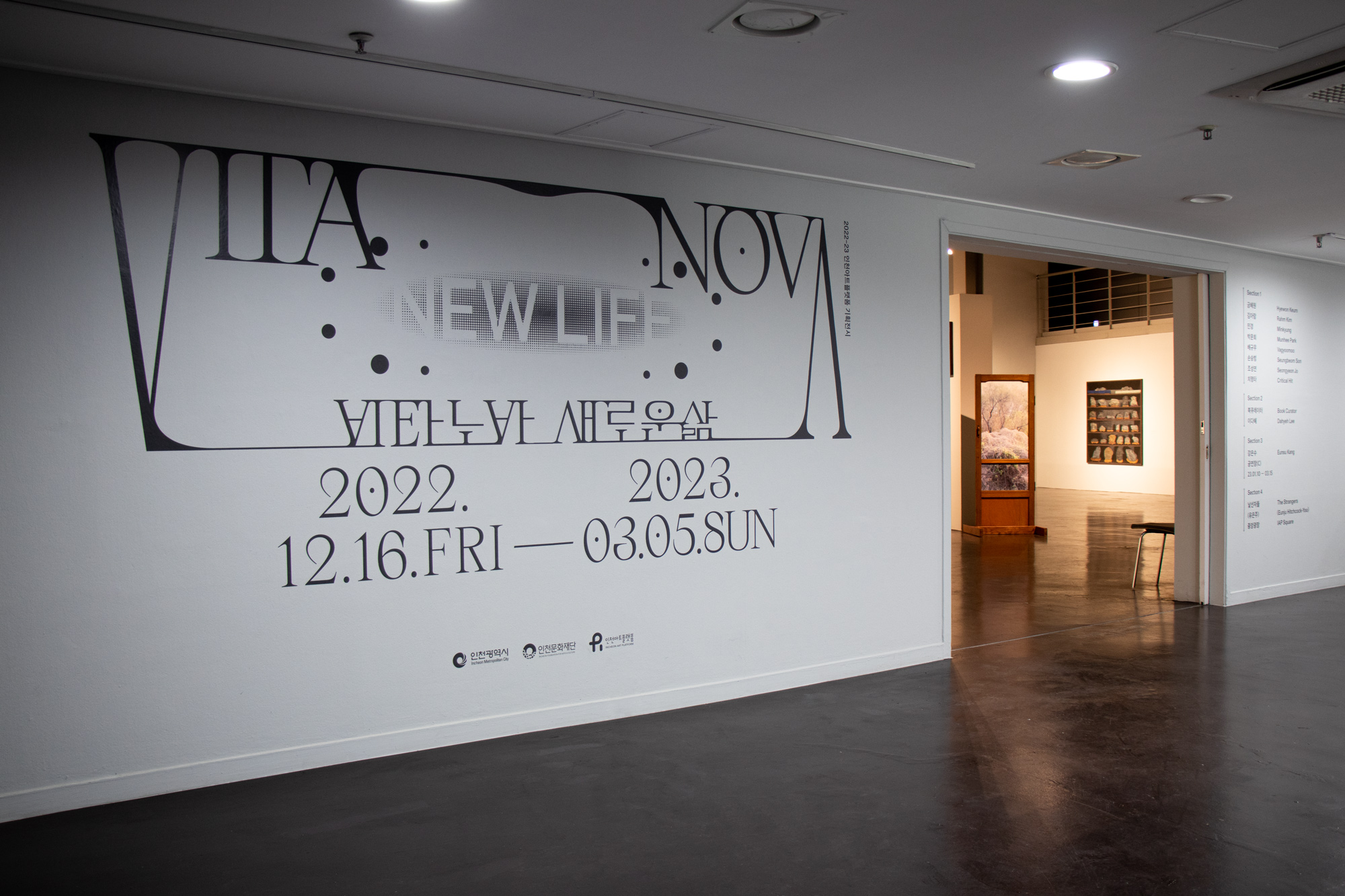
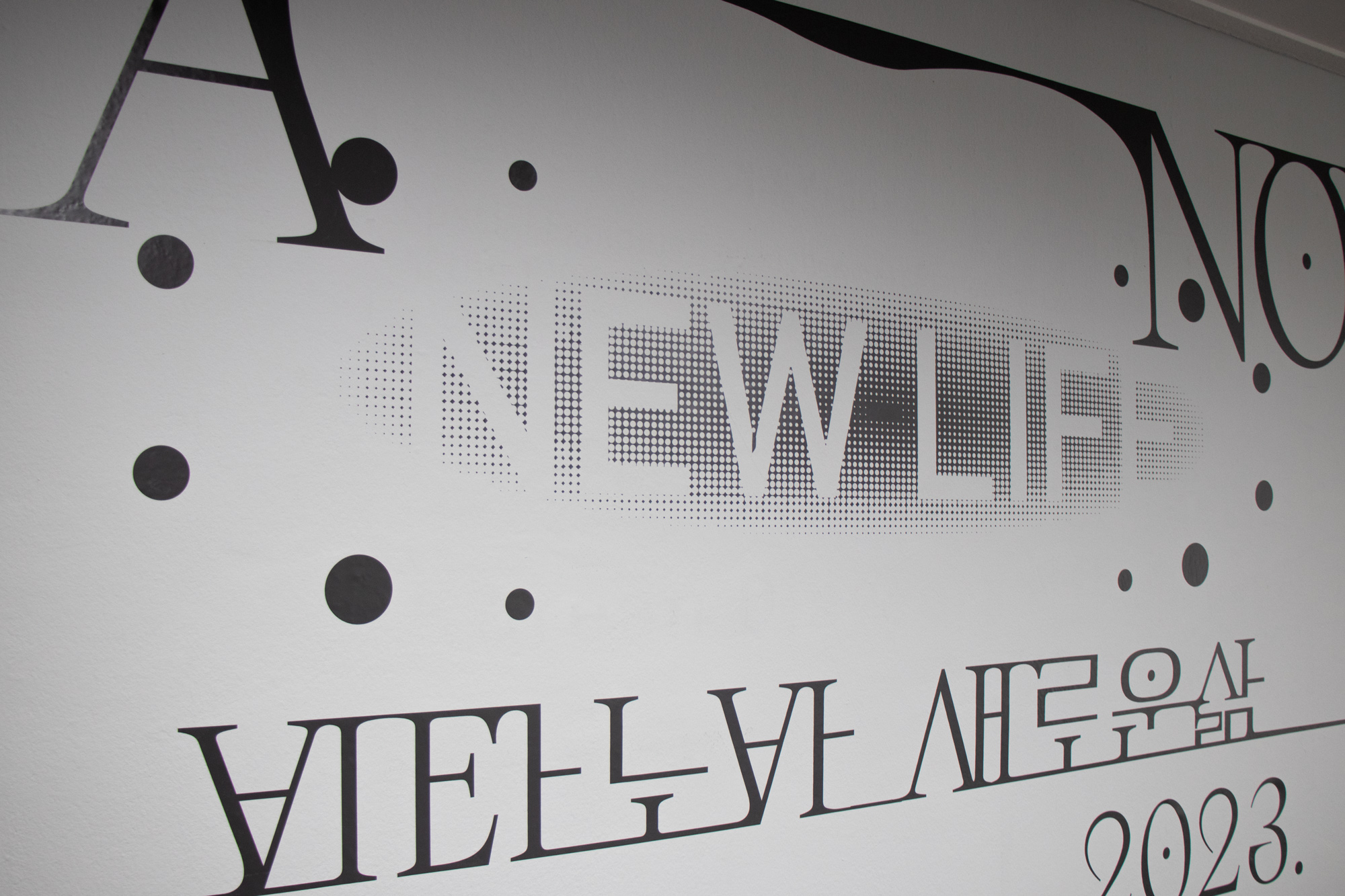




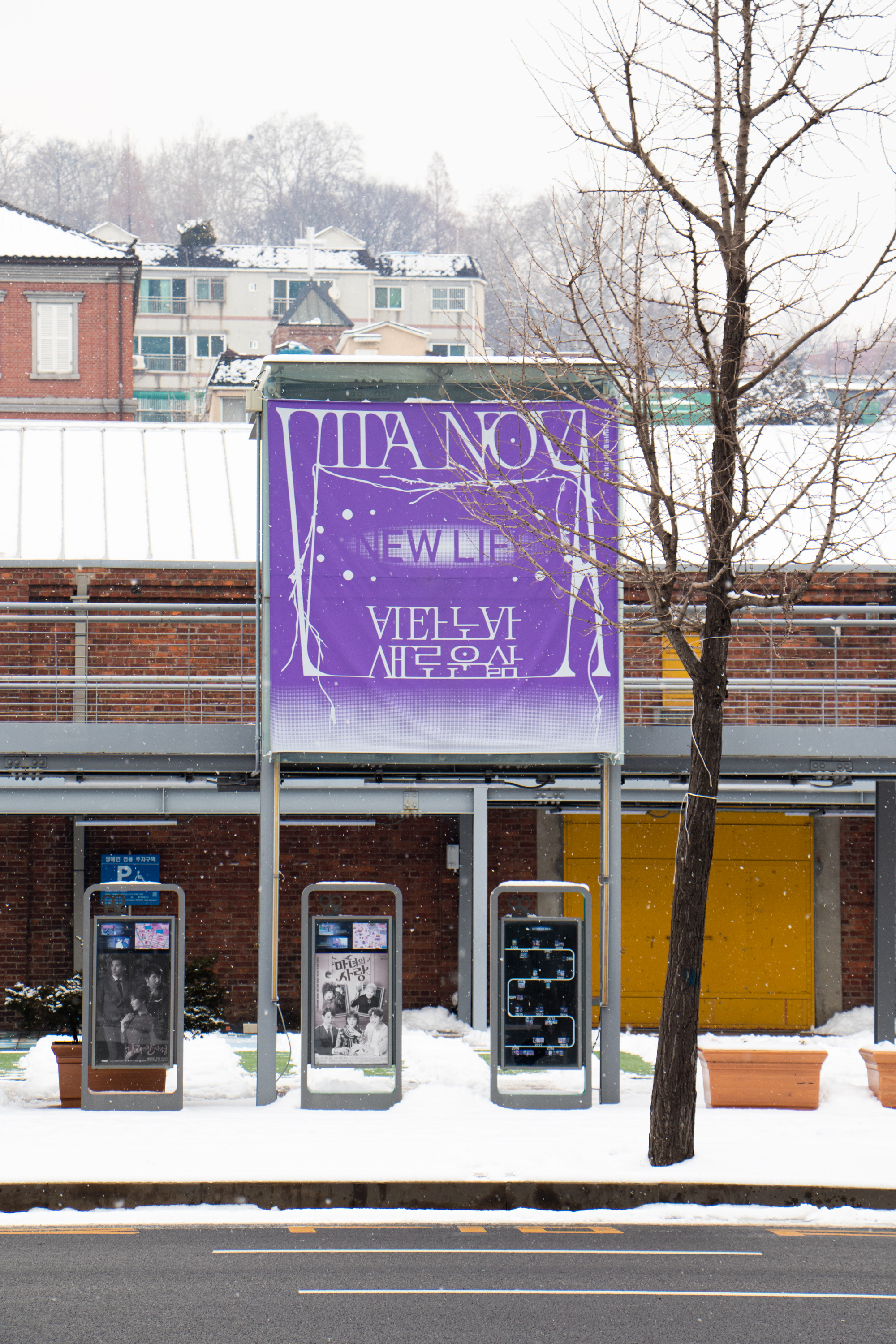

Photography by Hyejin Jeon︎︎︎
ⓒ SPINE PRESS
Curator
Youg-ri Lee
Book Curator
Dahyeh Lee
Assistant Curator
Juwon Park
Curatorial Intern
Yulim Kim, Seughee Choi
Graphic Design by
SPINE PRESS
Space Design by
SONKIM Architects
AV Equipment by
IECOMS
Transportation by
My Company Global
Publicity Materials by
Art-M
Youg-ri Lee
Book Curator
Dahyeh Lee
Assistant Curator
Juwon Park
Curatorial Intern
Yulim Kim, Seughee Choi
Graphic Design by
SPINE PRESS
Space Design by
SONKIM Architects
AV Equipment by
IECOMS
Transportation by
My Company Global
Publicity Materials by
Art-M
Hosted by
Incheon Metropolitan City
Organized by
IFAC-IAP
(Incheon Foundation for Arts and Culture-Incheon Art Platform)
IFAC, President
Jonggu Lee
IFAC, Division Head of Cultural Facilities
Donghyek Son
IAP, Team Leader
Kihyun Choi
Edited by
Young-ri Lee, Juwon Park
Translation
The Writers
Published on
March 2023
Incheon Metropolitan City
Organized by
IFAC-IAP
(Incheon Foundation for Arts and Culture-Incheon Art Platform)
IFAC, President
Jonggu Lee
IFAC, Division Head of Cultural Facilities
Donghyek Son
IAP, Team Leader
Kihyun Choi
Edited by
Young-ri Lee, Juwon Park
Translation
The Writers
Published on
March 2023